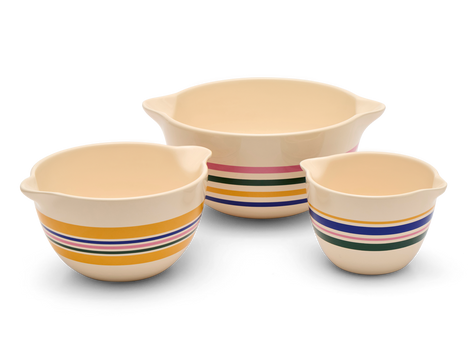
Step 1. Crack eggs into a small bowl, season with a pinch of salt, and whisk to combine. Heat a glug of olive oil in Deep Cut over medium heat. Cook eggs in a thin layer and cook gently until eggs set, about 3 minutes. Flip omelette and cook for another minute. Remove egg from pan onto cutting board, roll up, and slice into ribbons. Set aside on a tray.
Step 2. Slice carrots into long, thin rods. Stir fry with olive oil and a pinch of salt for 3 minutes. Set aside. Stir fry bok choy in the same way. Set aside. Assemble remaining kimbap fillings on the tray as well.
Step 3. In Stir Crazy, combine warm cooked rice, pinch of salt, and sesame oil. Lay seaweed sheet shiny side down and cover with a scoop of rice, spreading into a thin layer to the edges. With scissors, cut vertically into thirds.
Step 4. Starting with the perilla leaves, lay down all kimbap fillings on the bottom 1/3 of the seaweed rice strip. Roll tightly and use water or a few rice kernels to seal the edge. Let the rolls rest on the seam.
Step 5. Brush rolls with sesame oil for a glossy finish. Sprinkle with sesame seeds. Cut rolls in half and serve upright. Enjoy!























